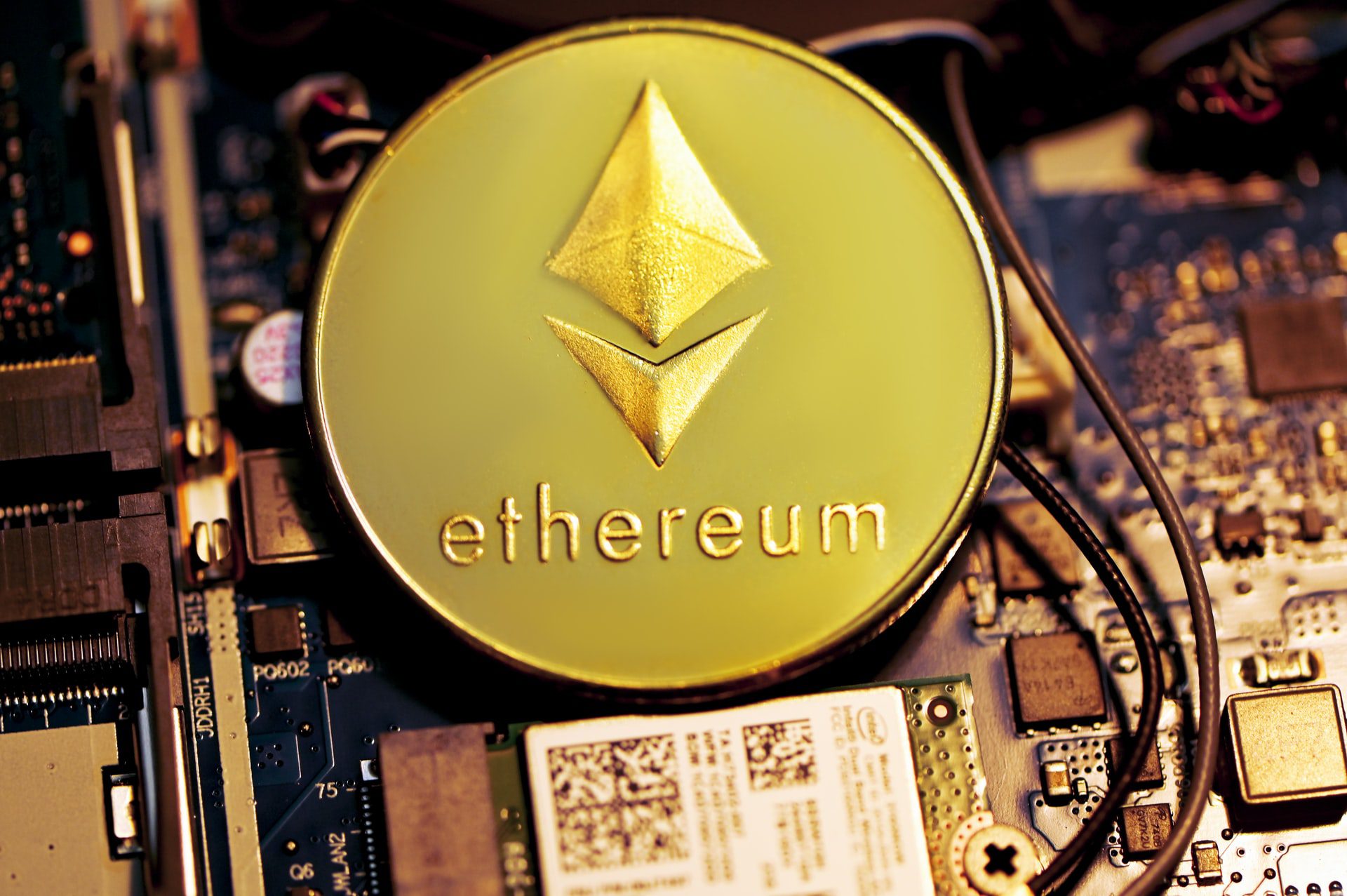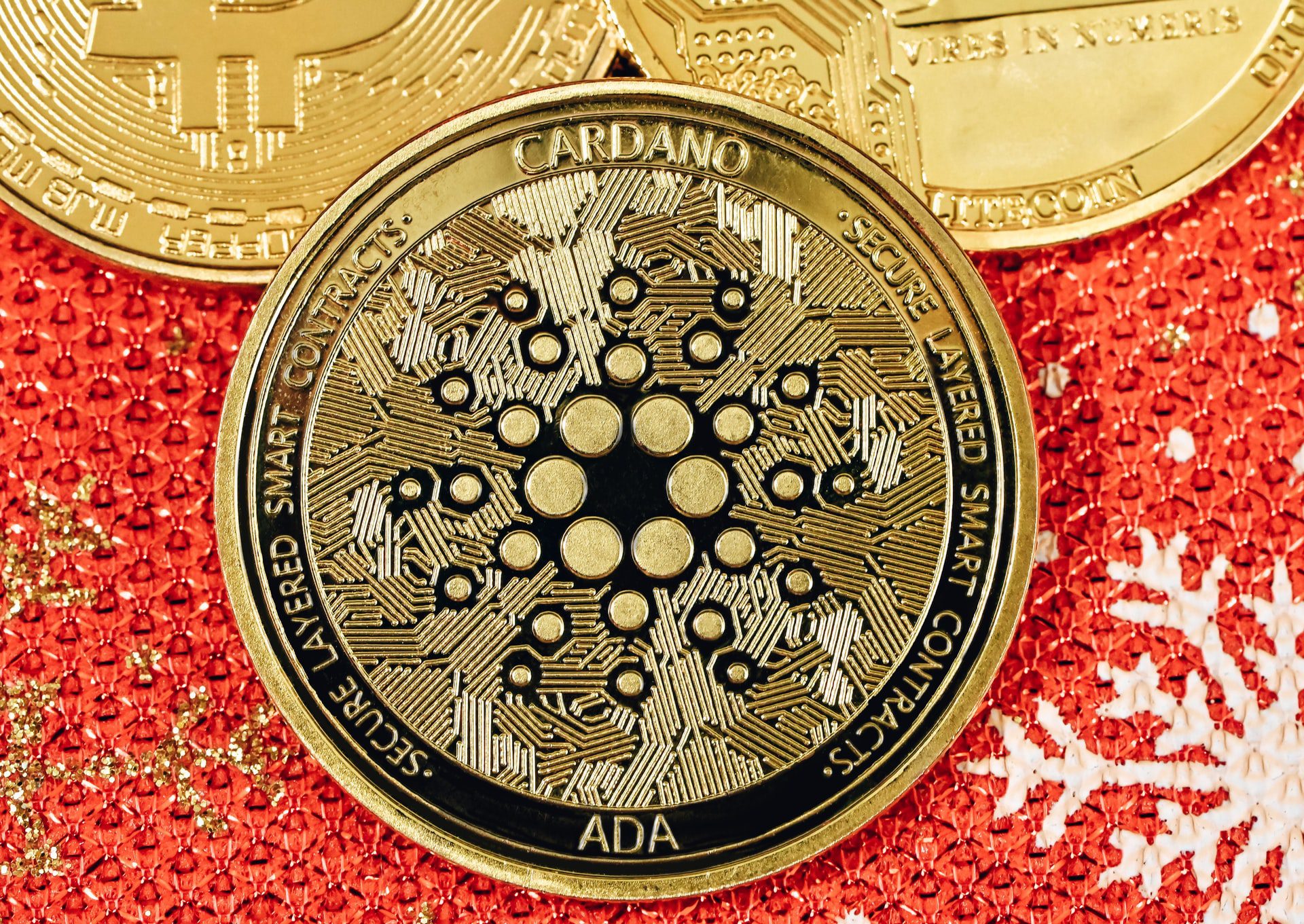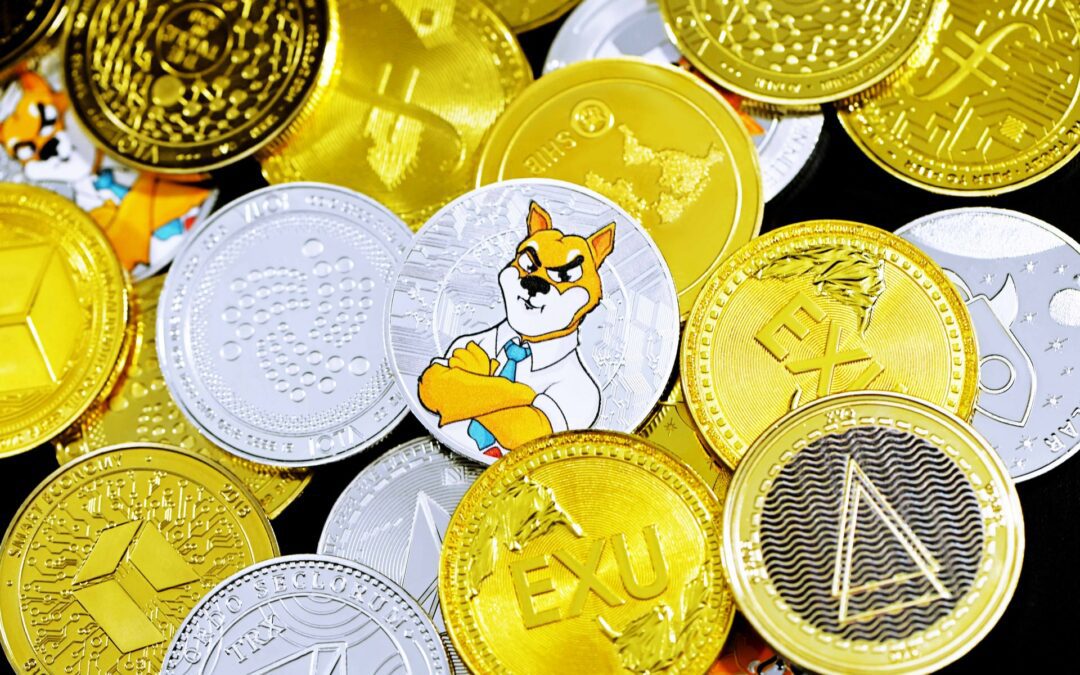Although Bitcoin has long been the biggest and most well-known cryptocurrency, you may have heard names here and there of other lesser-known currencies. Some of the biggest are Ethereum and Litecoin, but in reality, there are hundreds of altcoins out there, all with different values, goals, pros and cons. These are just a few of the most popular cryptocurrencies which are worth knowing about if you are looking to get into crypto or believe Bitcoin’s bubble may soon burst.
1. Ethereum (ETH)
Ethereum is easily one of the most well-known cryptocurrencies after Bitcoin and saw a surge in popularity over the past couple of years. It is currently the second-largest digital currency by market cap, after Bitcoin. The aim of Ethereum is to create a group of decentralised financial products that can be used anytime, by anyone in the world. It works as a decentralised software platform that allows smart contracts and dApps (decentralised apps) to be built and performed with virtually zero fraud or interruption by third parties. This is increasingly popular with people from countries with poor economies or infrastructure due to the fact it allows anyone to create and have access to financial products such as loans and bank accounts, which they otherwise would not be able to get. After Ethereum’s launch of ‘Ether’ tokens in 2014, it has been adopted quickly by many and can be used for a host of services, including crowdfunding, lending systems and insurance. With lending criteria for example, it is common for traditional lenders to take a long time to inspect your credit score and errors often occur; however decentralised lenders take your cryptocurrency as collateral, making it far easier to borrow money. For reference, there is also no coin limit on Ethereum (compared to Bitcoin’s limitation of 21 million) which means anytime is a great time to buy, however, this doesn’t create as much demand so it is unclear where ETH prices may head in the future.

2. Bitcoin Cash (BCH)
Bitcoin cash came about as the result of a hard fork in the original Bitcoin, which is a radical change to the protocol of a network, which comes as the result of much back and forth between miners and developers. Because of the decentralised nature of cryptocurrency, the code underwriting its processes cannot simply be changed on a whim and must be agreed upon by general consensus. However, if not enough people agree to the change, this can lead to a split where a new chain is created (essentially a shiny new version of the coin) with the new code implemented, although the original still remains. This is where BCH was born in 2017 because many people agreed that transaction times for Bitcoin were simply too long – a concern that it still valid, as well as the issue of its high transaction fees. BCH has succeeded in both of these areas and is ideal for small-scale transactions such as buying a cup of coffee, which leaves many asking whether it’s the future.
3. Cardano (ADA)
In simple terms, Cardano differentiates from Bitcoin due to its PoS (Proof of Stake) mechanism, versus Bitcoin’s PoW (Proof of Work) algorithm. What this means, without sounding too technical, is that a security system is in place just like Bitcoin’s, which aims for ethical and sustainable growth, with virtually no adverse environmental impact. Although popular, Cardano is still far behind Bitcoin and also many other cryptocurrencies which may be due to its large availability of 45 Billion ADA – which is still a limitation but will take a long time to be considered ‘in demand’. Cardano’s eventual aim is to be the world’s foremost financial operating system by providing solutions for issues such as voter fraud and legal contract tracing, and this remains to be seen. It has the eighth largest market cap of cryptocurrencies, however, is only recently becoming as well-known and accepted as its peers such as Litecoin.

4. Stellar (XLM)
Stellar comes with a different purpose than many other cryptocurrencies, which is to be a blockchain facilitating very large transactions, such as between investment firms and banks. While before a crypto transaction of this nature could take days or even weeks to process, with eye-watering fees, XLM has made it almost instantaneous. The beauty of this for the average user is that despite this use, it is still an open blockchain that can be used by anyone – so anyone who wants to process a very large transaction, and this works across almost all countries and currencies (although you must own XLM to use it). Proudly backed by the Stellar Development Foundation, the currency also has a noble cause – to provide financial access and inclusion globally by giving low-cost access to even those in the poorest of countries.
5. Litecoin (LTC)
Another of the first cryptocurrencies to follow behind Bitcoin, Litecoin was created by Charlie Lee, a graduate of MIT and ex-Google engineer. It runs on an open-source blockchain that is not controlled by anyone central authority. Litecoin differs from Bitcoin in that transactions are much faster, due to its faster block generation rate and there is also a far larger supply- some 84 million coins, almost four times the amount of Bitcoin. There are also a growing number of merchants accepting Litecoin which is a positive sign and now is a great time to get on board with the currency. Its popularity with merchants is again due to its fast processing times compared to Bitcoin – one Litecoin block takes a mere two and a half minutes to be mined, compared to Bitcoin’s 10 minutes. Although it is not quite at the top of the list; 21st in the world of cryptocurrencies by market cap; Litecoin is nevertheless a very popular option for trading and transacting.

6. Polkadot (DOT)
Surging in popularity to become one of the top ten cryptocurrencies based on market cap, Polkadot aims to do a few things. It connects blockchains with each other, as well as hosting them, handling both security and transactions. It also creates a bridge between blockchains on Polkadot with other networks, including Ethereum and Bitcoin. Although still considered a popular currency, it was severely hacked in 2017 which led to many people losing trust in Polkadot. In comparison to other cryptocurrencies though, there is very little to compare – although it doesn’t have significant competitors. When compared to Bitcoin or Ethereum though, Polkadot has entirely different goals, such as allowing inter-usability between blockchains and eventually aims to power dApp development. Polkadot may not be something to go all-in on, but it may be worth exploring it further.
7. Binance Coin (BNB)
Binance coin is the third-largest cryptocurrency by market capitalization and is part of Binance, the leading cryptocurrency trading platform which you may already be familiar with. BNB is used on the platform to pay for things such as trading fees, including withdrawals, exchanges and listing fees. It was created to encourage early platform users who would receive a discount on their transaction by using BNB, which was initially a temporary measure but still to this day certain transactions can get up to a 25% discount on fees by using BNB. The other reason demand for this is high is that, unlike Bitcoin, the number of BNB is finite and all 200 million coins were pre-mined. Although this is still a huge number, Binance came up with a clever way of generating more demand – coin burning. This is when coins are taken out of circulation and by doing this semi-regularly, it ensures increased interest in holding or buying the coin. Because Binance is such a large platform, with a huge user base, the uses of Binance Coin stretch far and wide. Aside from transaction fees, it can also be used on a Visa Card for shopping, making payments, gaining interest and trading.
8. Monero (XMR)
This cryptocurrency was funded entirely through donations by its community, and like many is secure and untraceable. Monero however takes this to new heights, which is what makes it so popular. It uses things called ‘Ring Signatures’ and “Stealth Addresses’ to make this happen, which means much like Bitcoin for example, transactions can be traced back to a group of people, but not one specific person. Imagine you conduct a transaction; Monero takes multiple users ‘Ring Signatures’ and puts them together so that if someone tries to trace the transaction, anyone of those signatures could be the instigator. On top of this, a stealth address is created which is a very long, unique on-time address that cannot be tied to any particular transaction. The cryptocurrency has long been, and will continue to be, extremely popular for users with a focus on complete privacy and upgrades to further this are still being added to the code.

9. Dogecoin (DOGE)
Dogecoin was the original ‘meme coin’, a currency borne out of a meme of a slightly surprised-looking Shiba Inu dog – no one expected it to become a worldwide sensation practically overnight. However, since then (perhaps thanks to Elon Musk) it is widely accepted by companies including SpaceX and Kronos. Dogecoin is a fun alternative to other currencies such as Bitcoin as it was designed without limit; 10,000 new coins are mined per minute and there is no upper limit. This may however explain its extreme volatility. On the other hand, Doge is the perfect fun cryptocurrency to investigate if you’re starting out, as it is based entirely on Litecoin, therefore any changes made to Litecoin reflect in Dogecoin too. It was simply created as an easy-to-use transaction platform, as opposed to anything new and innovative, which is what makes it endlessly popular.
10. Tether (USDT)
Tether belongs to a group of coins known as stablecoins, which are currencies that aim to attach their market value to a currency or other outside source to try and combat volatility. In this case, Tether’s price is directly connected to the price of the US Dollar, so one USDT is designed to remain exactly equal to $1USD. Although this may seem confusing, due to the fact that although there is reduced volatility, the potential for any profit is almost nil so the coin is not great for trading. However, its other benefits, such as extremely fast transaction times and minimal transaction fees. Tether is probably one of the least popular with crypto enthusiasts, not because it wouldn’t be a useful and stable place to put your money, but because the entire purpose of most cryptocurrencies is decentralisation, while Tether’s attachment to the USD means it may as well be a fiat system.
As always with any investment, it is worth doing thorough research on each and every one of these coins before buying or trading them as crypto remains volatile. It is clear that all of the above cryptocurrencies have varying positive uses although there are some downsides, considering Bitcoin is yet to be accepted widely across society, so these currencies may have to wait their turn. Despite this, they are most definitely here to stay and although the future is unpredictable (a new coin could be born any minute!) at least a few of these have the potential to grow into extremely useful and valuable cryptocurrencies.












